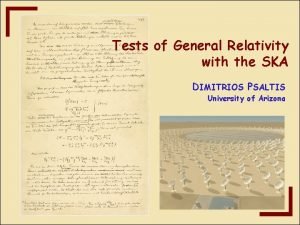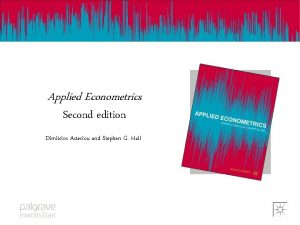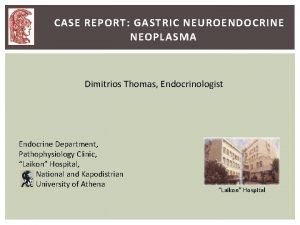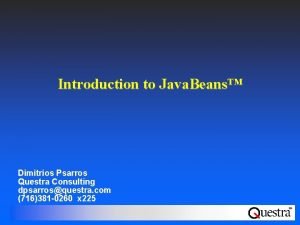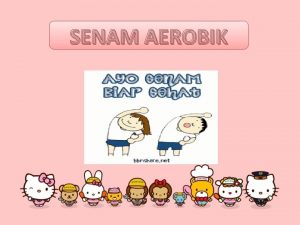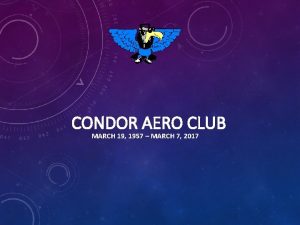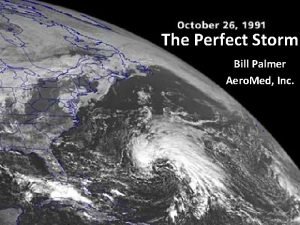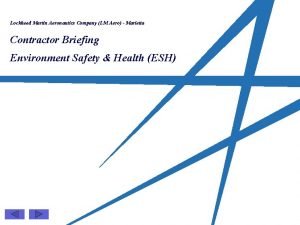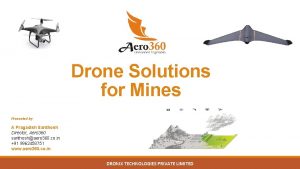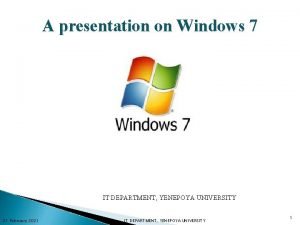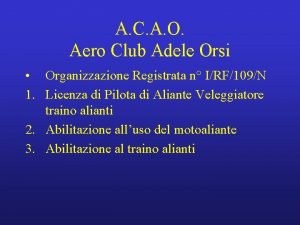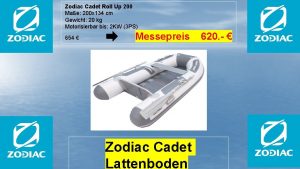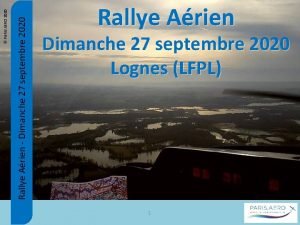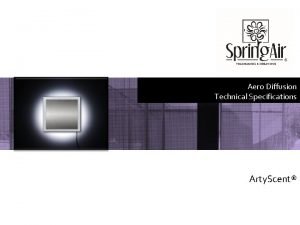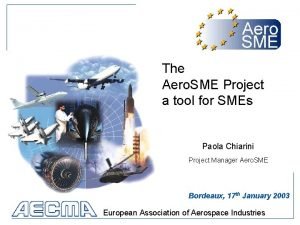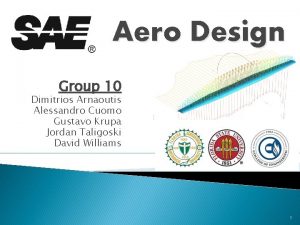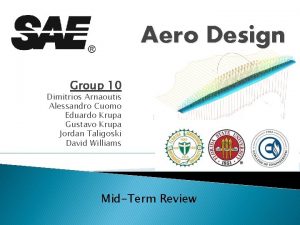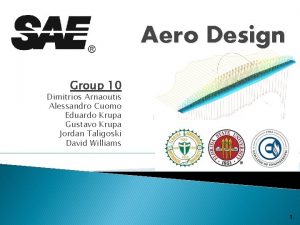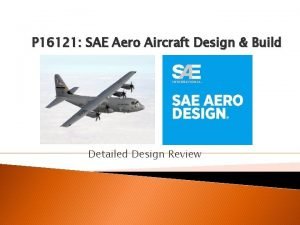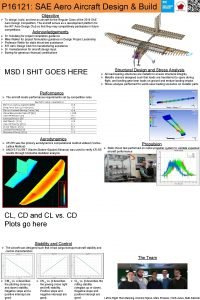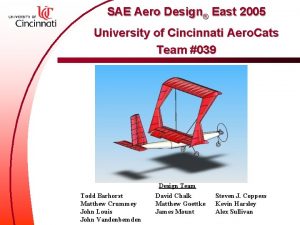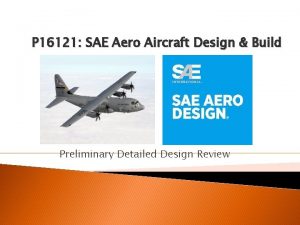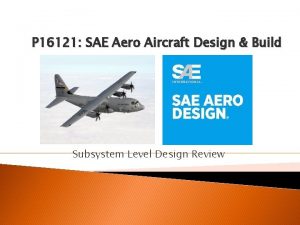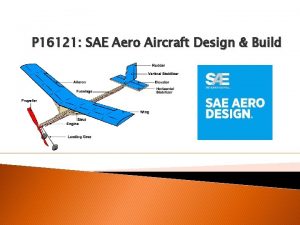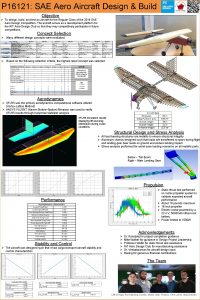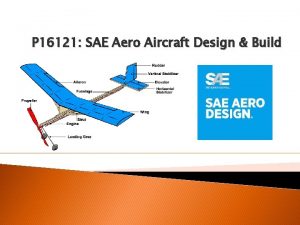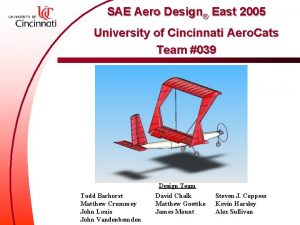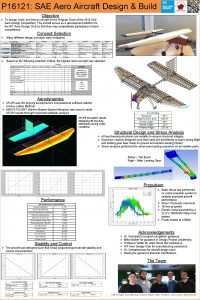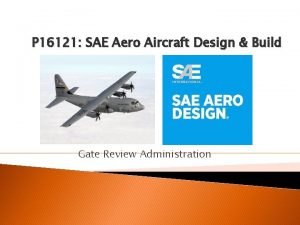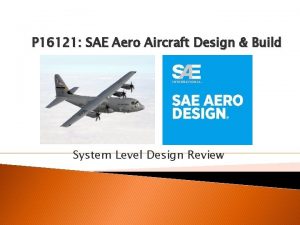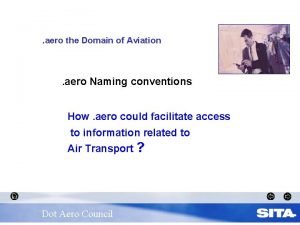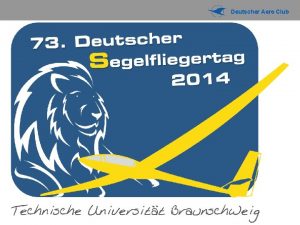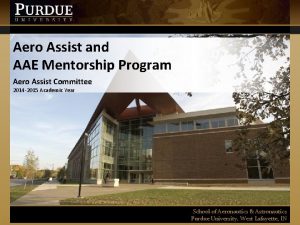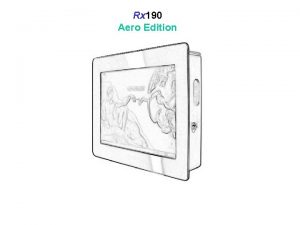SAE Aero Design Group 10 Dimitrios Arnaoutis Alessandro






















- Slides: 22

SAE Aero Design Group 10 Dimitrios Arnaoutis Alessandro Cuomo Gustavo Krupa Jordan Taligoski David Williams 1

Competition Assessment 2

Wing Profile 2, 5 2 • According to the literature(Abbot), the vortex effects decrease 20% of the aircraft`s lift coefficient. 3 Lift Coefficient 2, 5 -20 2 1, 5 1 2 D Lift Curve Re = 3 E+5 Stall Angle = 15 degrees. . . 0, 5 0 -0, 5 1, 5 0 20 40 α[degrees] EPPLER 420 1 S 1223 RTL 0, 5 UIRÁ 1540 0 Lift Coefficient • Knowing the MTOW, we find Airfoil data calculate for Cl_max 0 0, 1 Drag Coefficient 0, 2 Lift Coefficient = 2. 34 Drag Coefficient = 0. 048 L/D = 48. 8 Moment Coefficient = -0. 202 3

Wing Design • The software utilized was the Cea-VLM (vortex lattice method) • Several iterations were made varying: • Wingspan • Wing root and chord � � � � Wing span = 2. 7 m Root Chord = 0. 32 m Tip Chord = 0. 16 m M. A. C = 0. 28 m Tip Twist = - 2 degrees Wing Area = 0. 728 m^2 Aspect Ratio = 10 • Taper ratio and its position • considering it’s consequences to: • Wing weight (estimated via the Cubic Law) • Wing lift and drag • this process was monitored by the: • Oswald ‘s factor 4

• The wing loads were estimated utilizing the methodology proposed by Schrenk • In a later analysis this data will be used to size the wing spar by using finite element methods 30 Bending Moment[B. N] Wing Loads 35 25 20 15 10 5 -1, 5 Local Lift Coefficient -1, 4 -0, 9 -1 -0, 4 -3 -4 -0, 5 0, 1 0 0 0, 5 Wingspan [m] 0, 6 1 1, 5 1, 1 -5 -6 -7 -8 -9 -10 -11 -12 -13 Wingspan [m] 5

Performance Calculations Performance Parameters � 45, 00 � Available Thrust x Speed � Climb Angle 5. 1670 degrees Vstall 10. 6832 m/s Rate of Climb 0. 1920 40, 00 35, 00 Thrust [N] 30, 00 Load Factor 25, 00 20, 00 15, 00 10, 00 5, 00 10, 00 15, 00 Speed [m/s] 20, 00 25, 00 Speed [m/s] m/s

Takeoff Gross Weight � 7

Fuselage - Sizing � 8

Fuselage - Drag Calculations � 9

Payloads � 10

Payload Structure Initial concept: � Threaded shaft running horizontally down fuselage � Allows for: ◦ Weights to be spun and still with help of wing-nuts ◦ Adjusting of Center of Gravity Potential front wheel locations (must be steerable) Landing gear support made of a resilient composite material, Kevlar matrix and epoxy. 11

Engine Mount Engine will be a Magnum xls 61 � No “standard” mount on the market � Adjustable mount is suggested � Inexpensive~$4 -$6 � Very effective � http: //www. hooked-on-rc-airplanes. com/modelairplane-engine. html ‣There exist many variations ‣Essentially the same ‣Attaches directly to the fuselage ‣Decision will be made upon final shape of fuselage http: //www. activepowersports. com/greatplanes-adjustable-engine-mount-60120 gpmg 1091/ 12

Tail Booms http: //www. me. mtu. edu/saeaero/images/IM G_1215. JPG Conventional: � Commonly used in commercial passenger aircraft as cargo area � Design ◦ Flush with fuselage � Strength: ◦ Good torsion resistance � Weight: ◦ Heavier weight in comparison to other options of tail booms. Pipe: � Used in model aircraft and small helicopters � Design: ◦ Best done with carbon fiber (not permitted) � Strength: � Low torsion resistance � Weight: ◦ Lightest weight design Twin Boom: � Design: ◦ Greatly affects fuselage design � Strength: ◦ Great torsion resistance ◦ High stability � Weight: ◦ Highest weight compared to other booms 13

Tail Design Tail design deals mostly with stability, control, and trim � Sized small to reduce wetted area and weight � Symmetric non-lift inducing airfoil � Design affected by: � http: //www. americanflyers. net/aviationlibrary/pilots_ handbook/images/chapter_1_img_32. jpg ◦ Boom length ◦ CG location ◦ Aircraft stall velocity 14

Tail Design - Conventional http: //mewserver. mecheng. strath. ac. uk/group 2007/groupj/design/airframe/lower/ image/conventionals. jpg � Roots of both stabilizer attached to fuselage � Effectiveness of vertical tail is large � Vertical tail height removes possible length from wing 15

Tail Design – T-tail http: //mewserver. mecheng. strath. ac. uk/group 2007/groupj/design/airframe/lower/image/ts. j pg � Reduced aerodynamic interference � Vertical tail very effective due to fuselage and horizontal tail endplates � Horizontal tail can be lengthened for short boom designs 16

Tail Design – H-tail http: //mewserver. mecheng. strath. ac. uk/group 2007/groupj/design/airframe/lower/image/us. jpg � Uses the vertical surfaces as endplates for the horizontal tail � Vertical surfaces can be made less tall, adding to allowable wing length � Reduced yawing moment associated with propeller aircraft � More complex control linkages required 17

Tail Design – Decision Matrix Figure of Merit Weighting factor Conventional T-tail H-tail Drag 0. 20 3 2 1 Ease of Build 0. 10 5 3 2 Maneuverability 0. 15 3 4 5 Stability 0. 35 4 4 5 Weight 0. 20 4 4 3 Total 1. 00 3. 75 3. 5 18

Cost Analysis Item Description Quantity Cost Engine Magnum xls 61 1 $240 Balsa Wood Structure of aircraft, various lengths and shapes ~50 ft. $100 Monokote Skin around structure ~50 sq. ft. $60 Servos Controls flaps (elevator, aileron, rudder, etc. ) 5 $125 Fuel Tank Holds fuel within fuselage 1 $5 Battery Powers servos and receiver 1 $15 Radio and receiver Radio controller for the plane and the receiver to send control functions to servos 1 $0 Miscellaneous Items Wheels, pushrods, hardware, engine mounts, propeller TBD $75 -$150 *estimate *$620 -$695 Total 19

Future Plans � Newly Acquired Sponsor: ◦ highflyhobbies. com � Further, in-depth analysis � Control selection ◦ Servo sizing � Decide on a final layout before the end of the semester 20

References � SAE Aero Design Rule Book ◦ http: //students. sae. org/competitions/aerodesign/rules/ rules. pdf � Aircraft Design: Synthesis and Analysis ◦ http: //adg. stanford. edu/aa 241/Aircraft. Design. html � O. Schrenk, A Simple Approximation Method for Obtainign the Spanwise Lift Distribuition, TM 948, 1940. � NACA TN-1269, "Method for calculating wing characteristics by lifting-line theory using nonlinear section lift data". � http: //media. hobbypeople. net/manual/210802. p df 21

Questions Perguntas? ? ? 22
 Dimitrios psaltis
Dimitrios psaltis Applied econometrics dimitrios asteriou pdf
Applied econometrics dimitrios asteriou pdf Dimitrios lymberopoulos
Dimitrios lymberopoulos Dimitrios koutsonikolas
Dimitrios koutsonikolas Dimitrios thomas endocrinologist
Dimitrios thomas endocrinologist Dimitrios dimitriadis
Dimitrios dimitriadis Dimitrios zikos
Dimitrios zikos Dimitrios skarlatos
Dimitrios skarlatos Dimitrios psarros
Dimitrios psarros Dimitrios skarlatos
Dimitrios skarlatos Aerobik berasal dari kata aero yang berarti
Aerobik berasal dari kata aero yang berarti Condor aero club
Condor aero club Storm guard-aero
Storm guard-aero Lm aero
Lm aero Mining drone analysis
Mining drone analysis Aai tenders on cpp portal
Aai tenders on cpp portal Aero city amritsar
Aero city amritsar Aero
Aero Aeroclub adele orsi
Aeroclub adele orsi Zodiac fastroller 380
Zodiac fastroller 380 Aeroclub paris aero
Aeroclub paris aero Aero diffusion
Aero diffusion Sme aero power
Sme aero power
